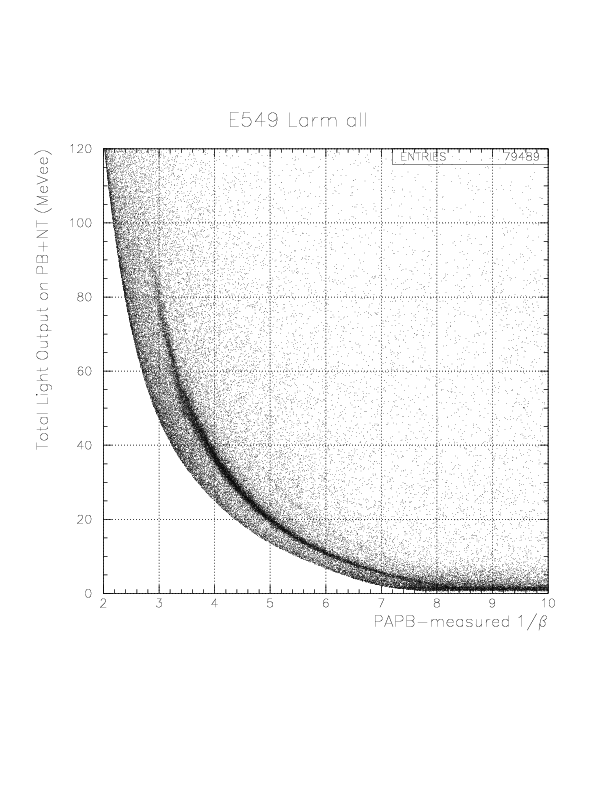
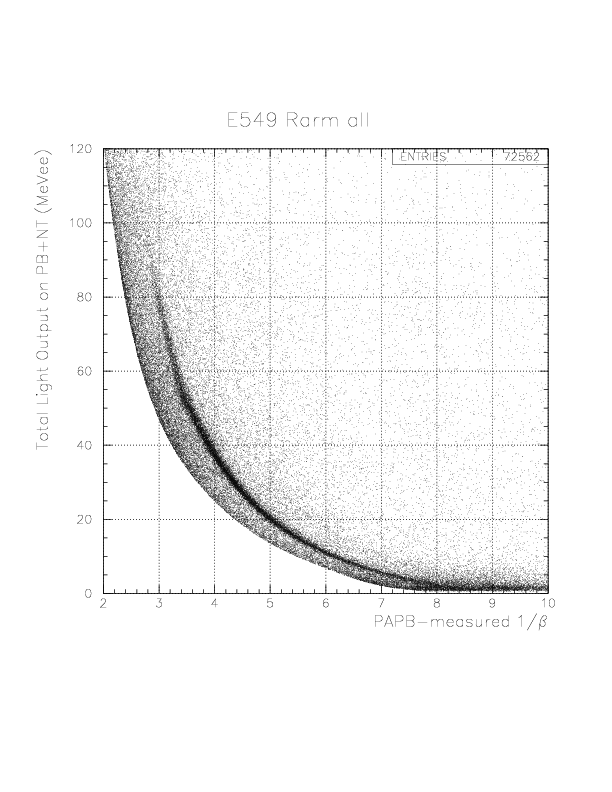
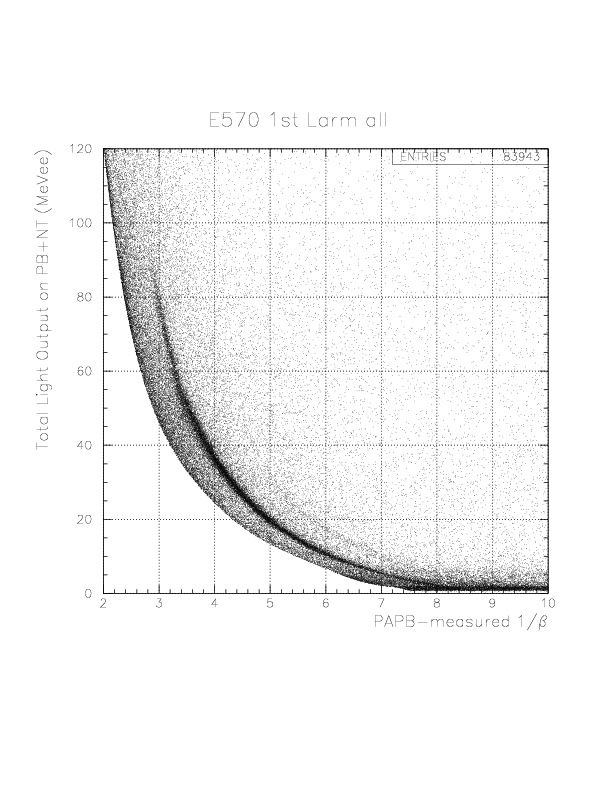
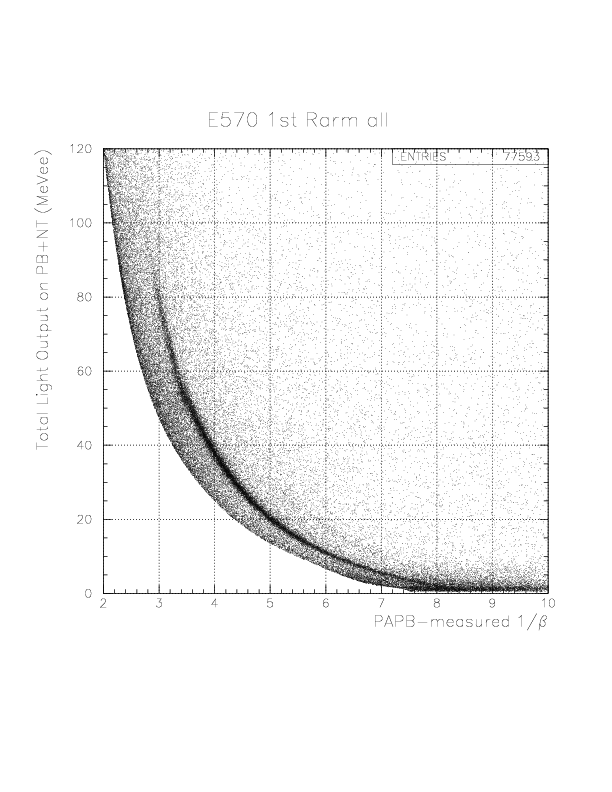
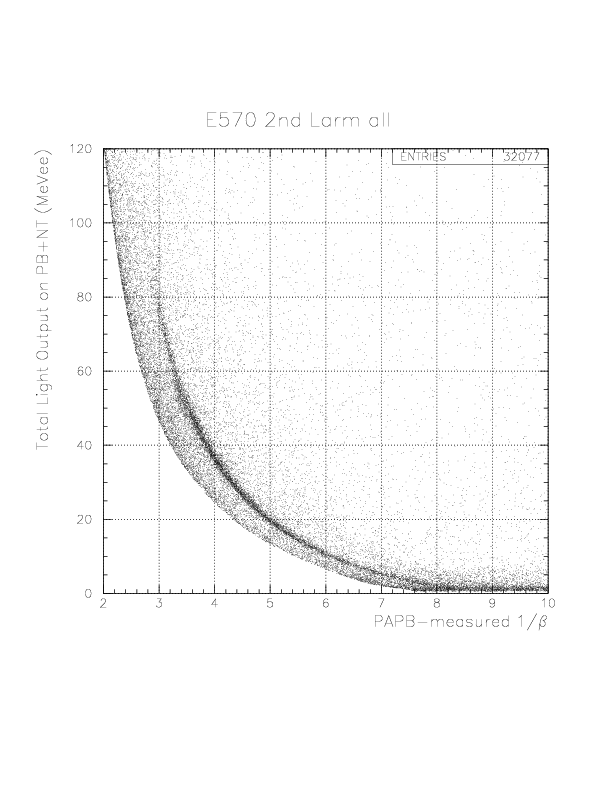
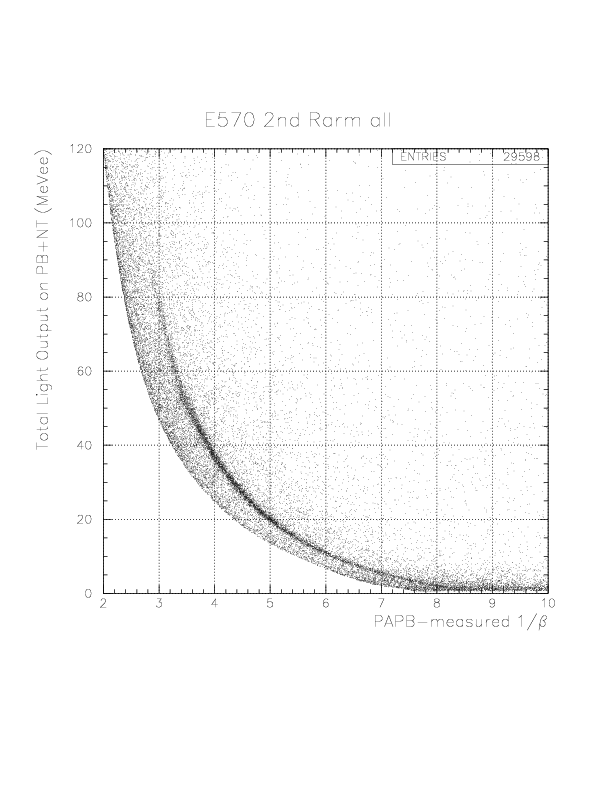






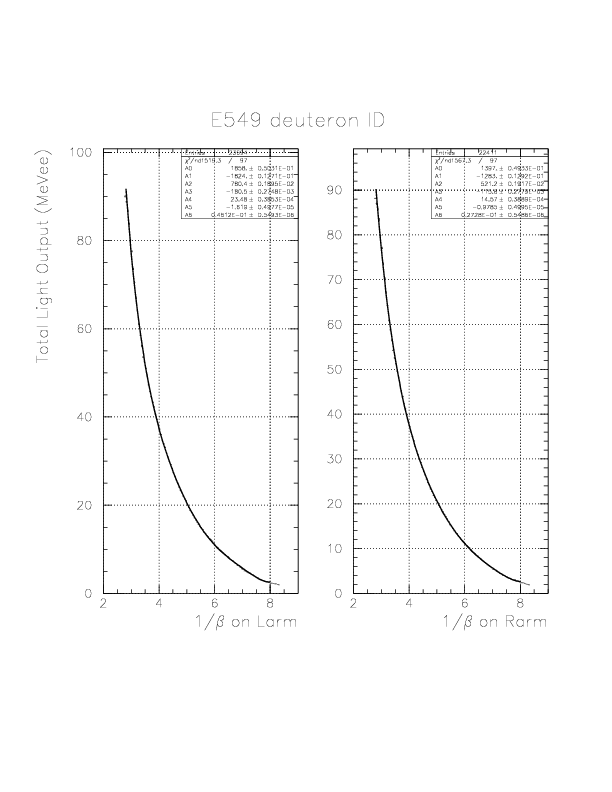
PID= T.E(PB/NT) - f(1/&beta(PA-PB)) (MeVee).
In order to select the 'deuteron' by 1/&beta-dependent way, we introduce a phenomenological function, g(1/&beta) as the straight line passing through two points (1/&beta, PID) = (8.0, 0.),(2.0, 10.),
g(1/&beta) -0.0= (0.0-10.0)/(8.0-2.0)*(1/&beta-8.0).
Then, we define the 'deuteron' events by the condition,|PID| < g(1/&beta).

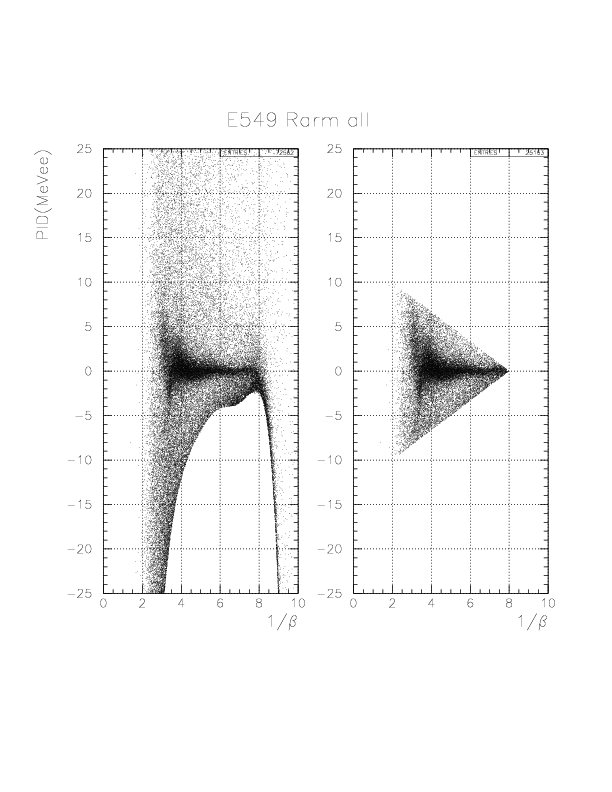
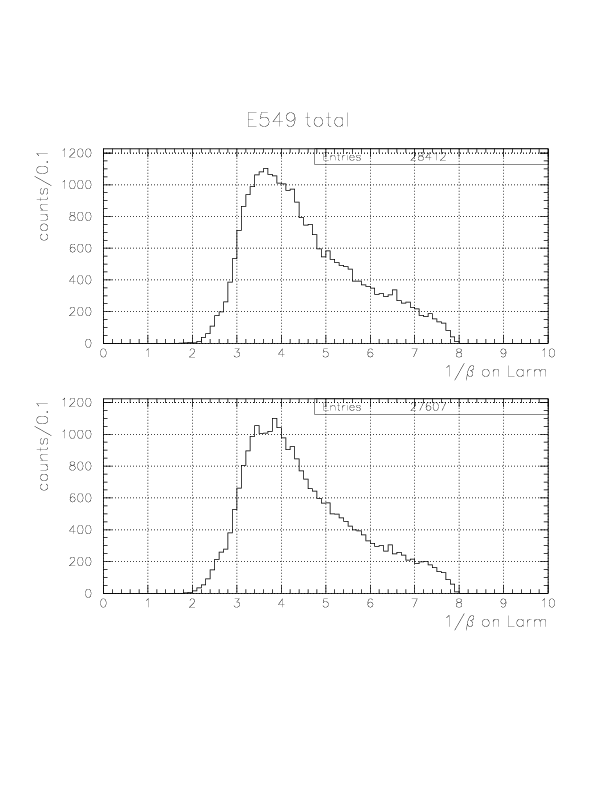
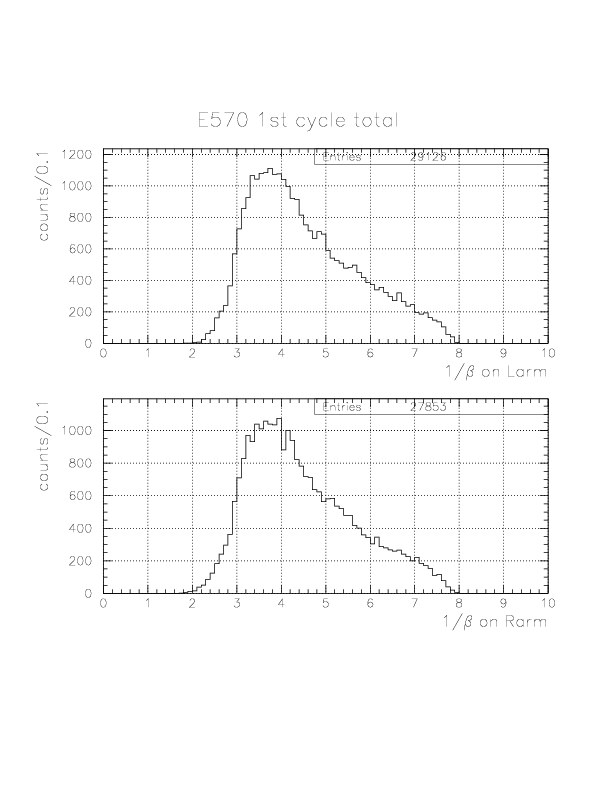
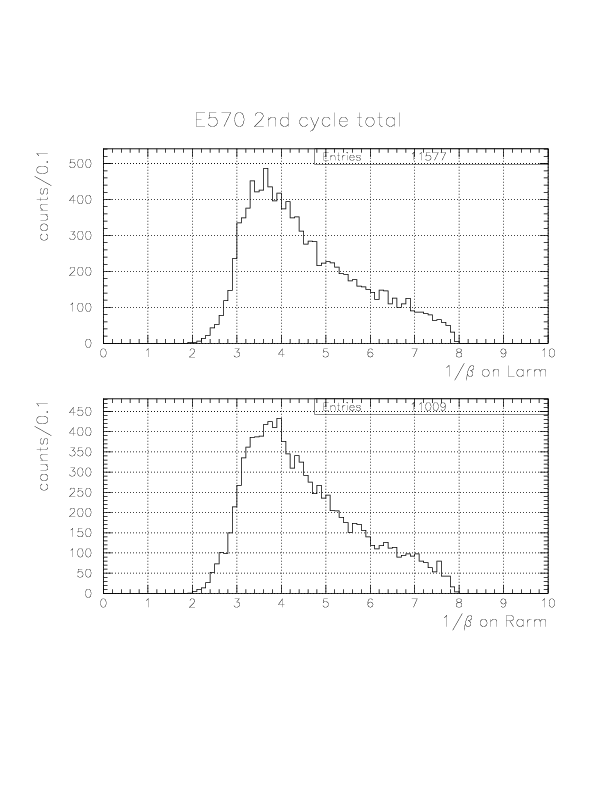 Inclusive spectra
Inclusive spectra
Deuteron inclusive momentum/4He(stopped K-, d)X0 missing mass spectra are shown below. In principle, they can be normalized to "percent of stopped K-" unit as was done for proton. Physical limits of the momentum/missing mass are ~760 MeV/c / 2055 MeV/c2, and we see non-negligible high-momentum background due to particle miss-identification.



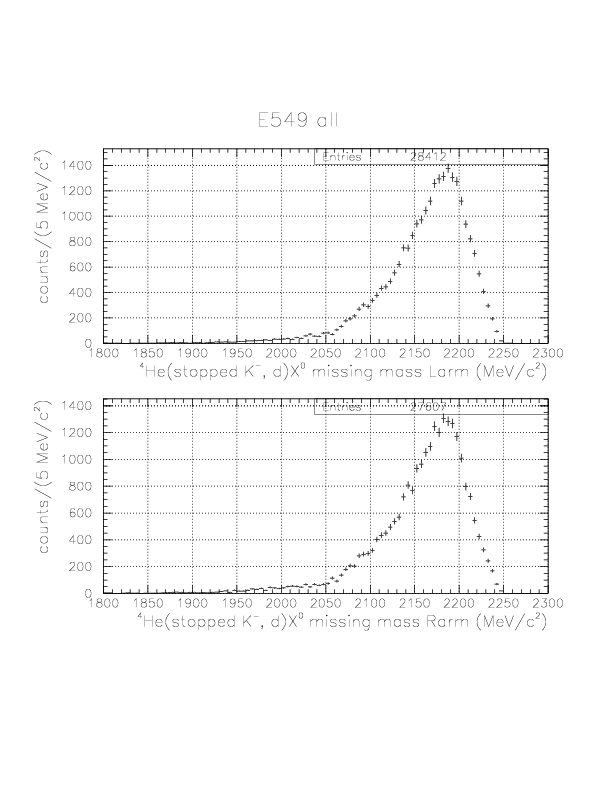
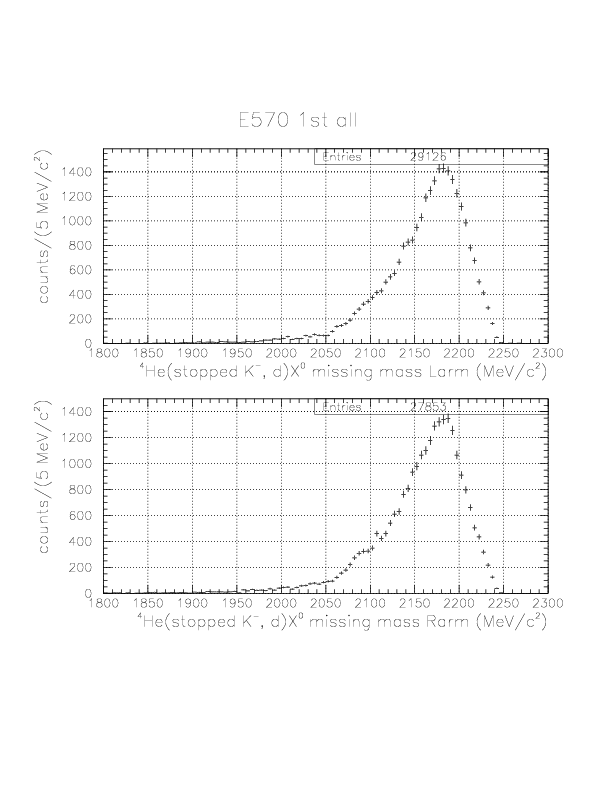



1. &pi on TC
2. p on TC
4. &pi on NT (d-&pi back-to-back)
6. n(3MeVee) on NT (d-n back-to-back)
Variable definition is as follows:deuteron 4-momentum pd(0:3)/3-momentum p'd(3):pd(i)=p'd(i) (i=1,2,3), pd(0)=sqrt(Md2+|p'd|2),
Nucleon 4-momentum pN(0:3)/3-momentum p'N(3):pN(i)=p'N(i) (i=1,2,3), pN(0)=sqrt(MN2+|p'N2|)cos(Nd):p'd*p'N/(|p'd|*|p'N|)
Nd total 3-momentum Ptot:sqrt((pd(1)+pN(1))2+(pd(2)+pN(2))2+(pd(3)+pN(3))2)
Nd total energy Etot:pd(0)+pN(0)
4He(stopped K-,Nd)Y-/0 missing mass Mmiss:sqrt((M4He+MK--Etot)2-Ptot2)
By using &Lambda d pair detected simultaneously, we can study the final state
K- + 4He -> &Lambda + n + d.
Even if we detect &Lambda and d simultaneously, the final state can be contaminated byK- + 4He -> &Lambda + p + &pi- + d,
K- + 4He -> &Lambda + n + &pi0 + d,
orK- + 4He -> &Sigma0(&Lambda&gamma) + n + d,
K- + 4He -> &Sigma0(&Lambda&gamma) + p + &pi- + d,
K- + 4He -> &Sigma0(&Lambda&gamma) + n + &pi0 + d.
The pionic final states are very difficult to be detected due to the small reaction Q-values. All of the contaminants can be eliminated by imposing 4He(stopped K-, d&Lambda)X missing mass being neutron mass.This final state is considered to include possible 3 subcomponents, as
K- + "pn" -> &Lambda + n + d (1:"2"-nucleon absorption &Lambda n d branch),
K- + 4He -> S+ + n, S+->&Lambda + d (2:S+ tribaryon production and its &Lambda d decay),
K- + 4He -> X0 + d, X0->&Lambda + n (3:X0 dibaryon production and its &Lambda n decay).
Very unfortunately, they cannot discriminated by purely kinematical consideration, and we do need some dynamics. For example, the relationship between d&Lambda invariant mass,Md&Lambda, and d&Lambda total 3-momentum, vec(ptotal)=vec(pd)+vec(p&Lambda), is as below:(Md&Lambda)2 = (pd+p&Lambda)2 = (Ed+E&Lambda)2 - (vec(pd)+vec(p&Lambda))2=(Einit-En)2 - |vec(ptotal)|2
=(Einit-sqrt(mn2+|vec(pn)|2))2 - |vec(ptotal)|2=(Einit-sqrt(mn2+|vec(ptotal)|2))2 - |vec(ptotal)|2
where the conservation of 4-momentum,Einit=M4He+MK-=Ed+En+E&Lambda,
vec(pinit)=vec(0)=vec(pd)+vec(pn)+vec(p&Lambda),
have been assumed.Note that it is already known from &Lambda n correlation analysis that the process 1 does not produce a deuteron over 300 MeV/c, and it makes a broad peak at 3070 MeV/c^2 if the deuteron could be detected.
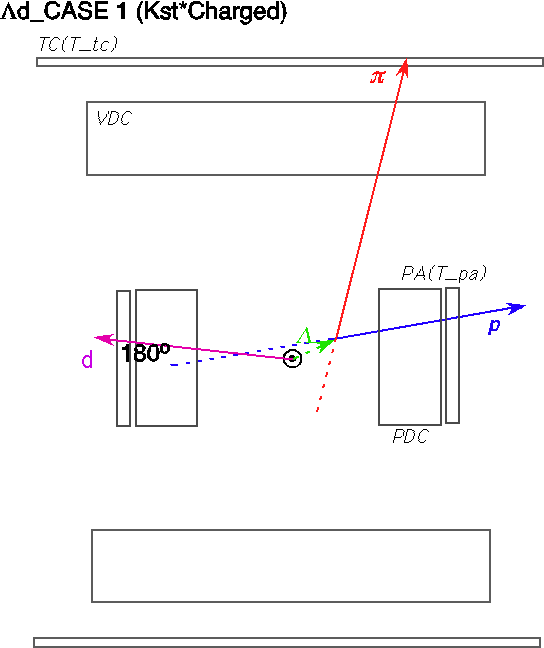
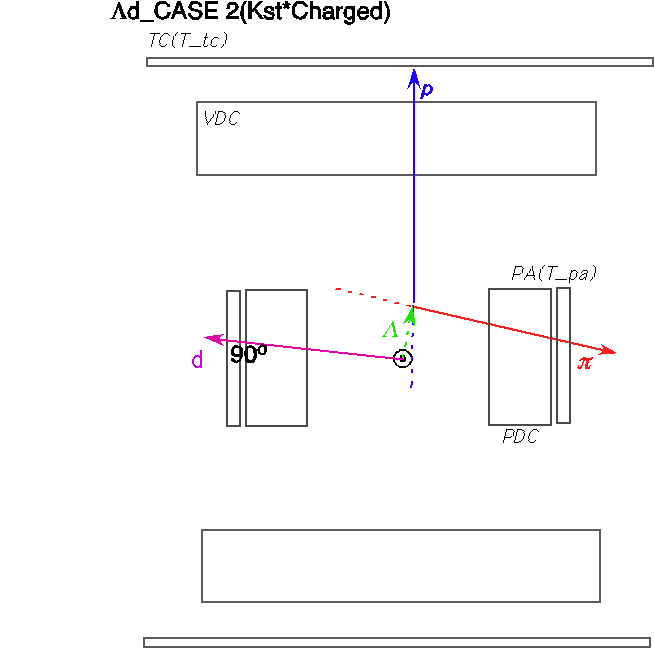
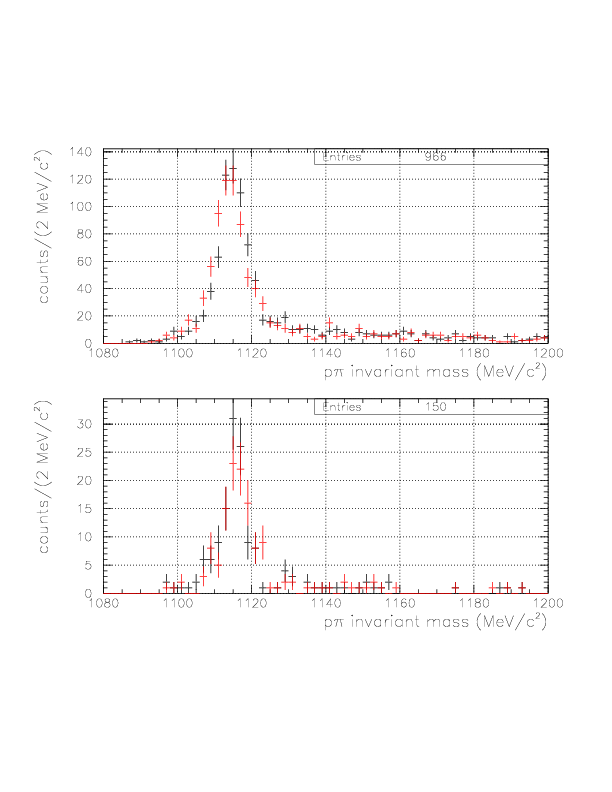

To identify the &Lambda particle, we impose positive shift and p&pi invariant mass within (1108.,1124.)/(1111.,1121.) for case1/2, respectively.
K- + 4He -> &Lambda + n + d
, andK- + 4He -> &Sigma- + p + d
. Then, it is possible to introduce hyperon 3-momentum pY(1:3) and Mmiss being defined byvec(pY)=-(vec(pd)+vec(pN)),
Mmiss=sqrt((M4He+MK--EN)2-PN2)
, and treat them as hyperon 3-momentum and Yd invariant mass. The &Lambda/&Sigma- are defined aspn.le.400 MeV/c .AND. 4He(stopped K-,dn)Y0 mass within (1100.,1150.) MeV/c2:&Sigma-
4He(stopped K-,dp)Y- mass within (1180.,1220.) MeV/c2:&Lambda